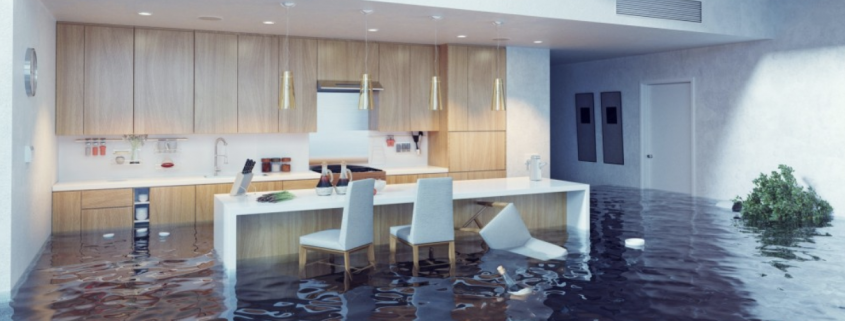How to protect your home from water damage
How to protect your home from water damage
Water damage is one of the most common and costliest disasters your home can experience, costing billions of dollars annually. Safeguard your most important asset against water damage with the right insurance coverage and the following practical advice.
Water damage and insurance
Different types of water damage are insured by different types of policies.
Homeowners and renters insurance provides coverage for burst pipes, wind driven rain and damage resulting from ice dams on your roof. Generally speaking, water that comes from the top down—such as rainfall and burst sprinklers—is covered by a standard homeowners policy.
Some policies cover sewer and drain backups, but many do not; however, you can purchase a sewer backup rider to your homeowners or renters coverage.
Typically, water that comes from the bottom up—such as an overflowing river—is covered by a separate flood insurance policy, which can be purchased from the federal government’s National Flood Insurance Program (NFIP), and from some private insurers. If you live in a flood prone area, learn more about appropriate coverage.
Properly maintaining a home is one of the best ways to prevent water damage from water disasters.
Prevent basement water seepage
- Reseal your basement. Water in the basement is often caused by cracks in building foundations or floor slabs. If you notice water seepage after heavy rain when you’ve never had a problem, it may mean that your once-waterproof cement floors and basement walls have deteriorated. Painting vulnerable areas with water sealant can prevent seepage.
- Make sure water drains away from the building. Seepage is exacerbated by soil that has settled in a way to make water flow toward the building. After a storm, and especially if the ground is already saturated, rainwater that flows towards the building goes down the outside of the foundation wall potentially through any cracks.
- Install a backwater valve. Though less common than other causes of basement water, sewer backups are messy. Learn more about your sewer responsibilities and install and maintain a backwater valve, which allows sewage to go out, but not come back in.
Maintain and understand your indoor plumbing systems
- Inspect appliance hoses and faucets. Make it a practice every year to check hoses leading to water heaters, dishwashers, washing machines and refrigerator icemakers. You may also want to invest in a water leak monitoring and shut-off system that can alert you to any leakage issues. Immediately replace any hoses that have cracks or leaks, and replace them all every five to seven years.
- Inspect showers and tubs. Check the seal and caulking around showers and tubs to make sure they are watertight and reseal if necessary.
- When away on vacation, shut off the water supply to the washing machine and never leave the house while the washer or dishwasher is running.
- Know the location of the main water shut-off valve in your home. A damaged hose or a burst pipe can send water racing into your home. Being able to locate and shut off the main water supply quickly will save stress, money and time.
- Install an emergency pressure release valve in your plumbing system. This will protect against the increased pressure caused by freezing pipes and can help prevent your pipes from bursting.
- Check plumbing and heating pipes. Look closely for cracks and leaks and have any necessary repairs made immediately.
Repair and protect your home’s exterior
- Caulk and seal windows to guard against water seepage.
- Inspect your roof for missing, damaged and aging shingles and make necessary repairs.
- Check your downspouts. Remove debris that may have accumulated in downspouts and rain gutters. Position downspouts so that they direct water away from the house.
- Check sprinklers and irrigation systems to be sure they are not creating water damage to the walls and foundations of the house. Turn off and drain outside faucets to protect against frozen pipes.
- Install gutter guards to prevent gutter clogs and keep water flowing away from the house instead of accumulating on the roof.
Protect your possessions
- Store off-season and other bulk belongings in waterproof bins, especially in areas where there are plumbing pipes or that are prone to dampness, such as basements and attics.
- Never store valuables or memorabilia where there is risk of destruction from water. Water and damp also brings with it the threat of mold damage.
- Keep belongings stored on shelving off the floor in basements. In case of water seepage or sewer backup, they’re less likely to get damaged.
- Keep an up-to-date home inventory. Having a comprehensive list of your possessions will save time, trouble and stress in case of loss from water damage.


Leave a Reply
Want to join the discussion?Feel free to contribute!